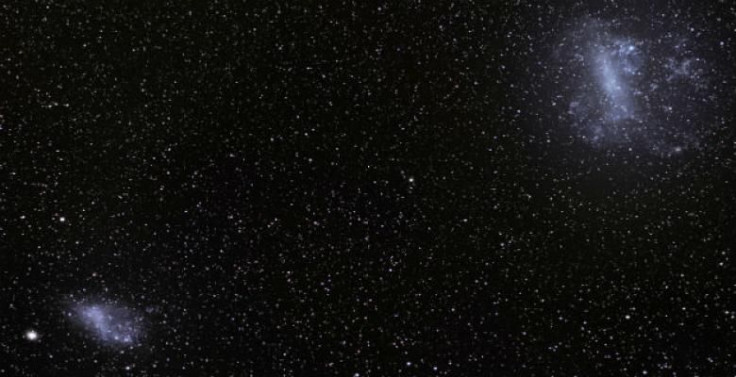Collision Of Small Galaxies Provides Fuel For Star Formation In Massive Ones

A few months back, scientists reported Milky Way was being fed by an arching arm of gas from the Magellanic Clouds — a pair of dwarf galaxies that orbit each other as well as our own galactic neighborhood.
The gravitational tug of the Large Magellanic Cloud, which sits 160,000 light-years away from Earth, is pulling more than a billion suns’ worth of gas from its smaller companion and feasting on our galactic disk. The structure, named “Leading Arm,” appears to be nearly one to two billion-years-old and connects the dwarf galaxies with the bigger one, as per scientists.
It has long been believed the cooling of this gas will foster the birth of new stars in our galaxy, but in a recent work, a team of scientists from Columbia University were able to provide more insight into the whole process of stripping and feeding gas by observing an analog of the Magellanic Clouds.
The researchers identified a pair of companion dwarfs, named NGC 4490 and NGC 4485, some 23 million light-years away from Earth. These galaxies are very similar to the Large and Small Magellanic Clouds in terms of size and are far enough from the Milky Way to be observed without its gravitational interference.
So, the researchers observed the two galaxies and ran a series of simulations to see how their interaction affects the dispersal of gas. As part of the effort, they observed the duo head closer to each other over a timeline ranging from several million to billion years.
The work revealed as the galaxies merged into one, the larger dwarf pulled material from the smaller one, creating a massive tail of gas. This was similar to the one created by Large and Small Magellanic clouds, but more importantly, the team found the expansion of gas continued long after the two galaxies collided and merged into one.
“After 5 billion years, 10 percent of the gas envelope still resides more than 260,000 light years from the merged remnant, suggesting it takes a very long time before all the gas falls back to the merged remnant,” Sarah Pearson, the lead author of the work, said in a statement.
The lingering dispersion of gas over such vast distances makes it lose and gives an opportunity to bigger galaxies to come into the scene and consume the material for bringing new stars to life. This is exactly what the Milky Way has done in the case of Large and Small Magellanic Clouds.
“Our study suggests that similar dwarf pairs exist out there,” Pearson added. “Because their gas is so extended, if they fall into something like the Milky Way, their gas is easily shed." The findings of the study were even verified by observation of the two dwarf galaxies in question.
The study titled, “Modeling the Baryon Cycle in Low Mass Galaxy Encounters: the Case of NGC 4490 & NGC 4485,” was published in the Monthly Notices of the Royal Astronomical Society.
© Copyright IBTimes 2025. All rights reserved.





















